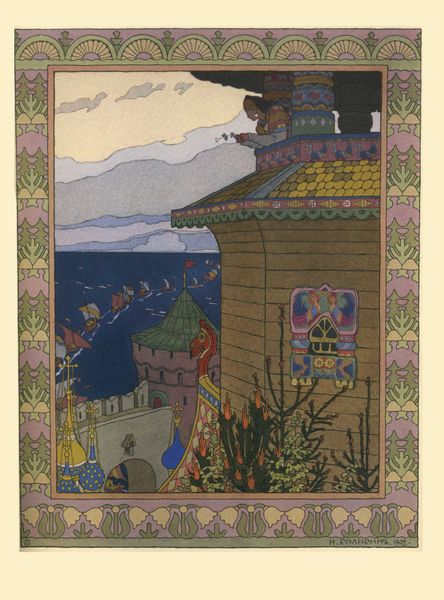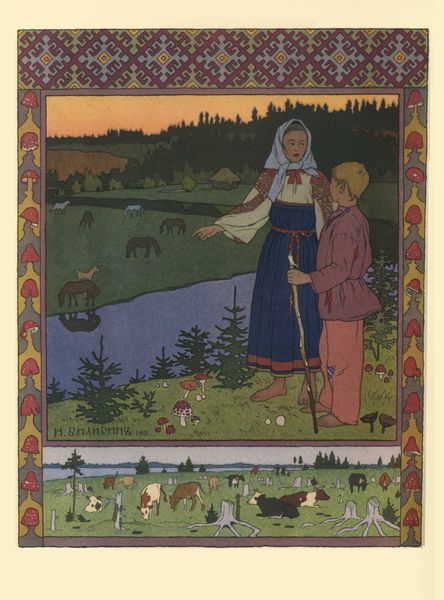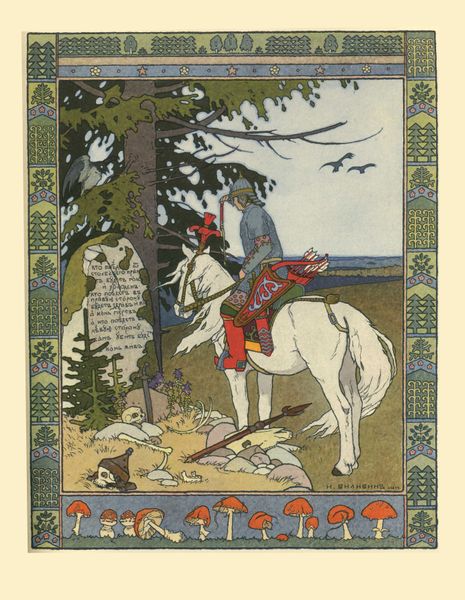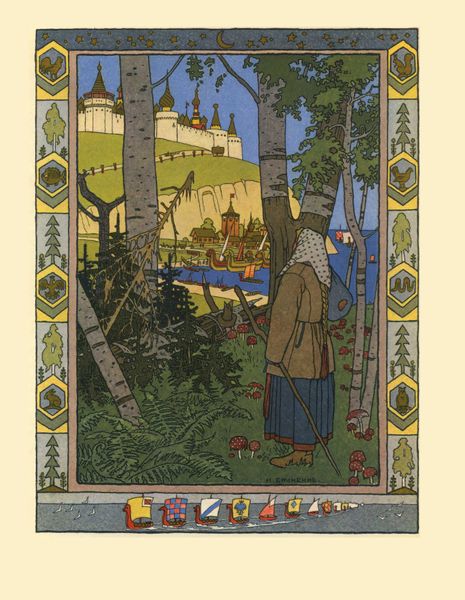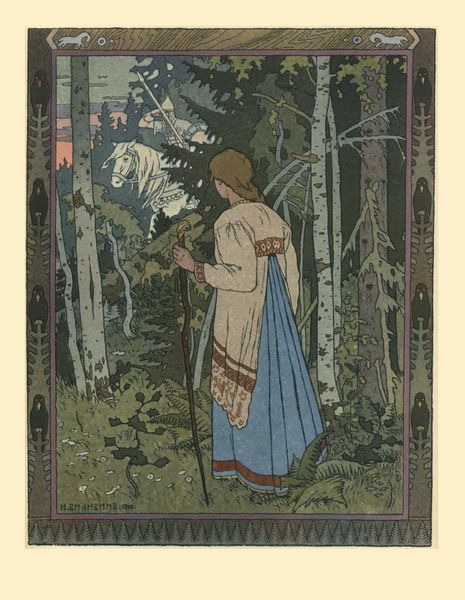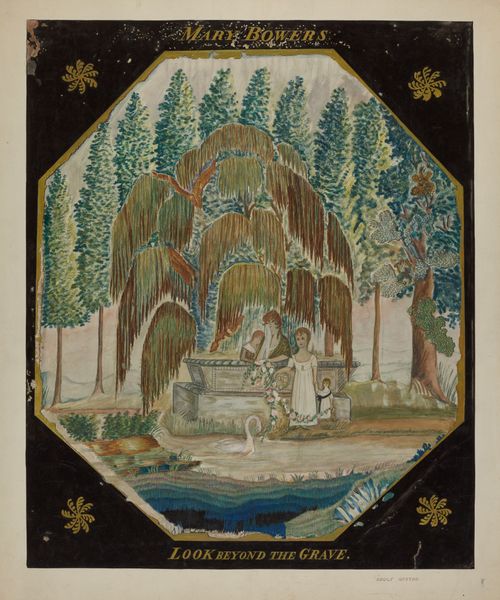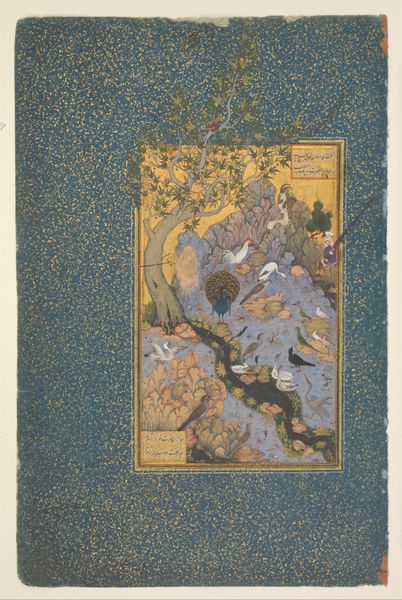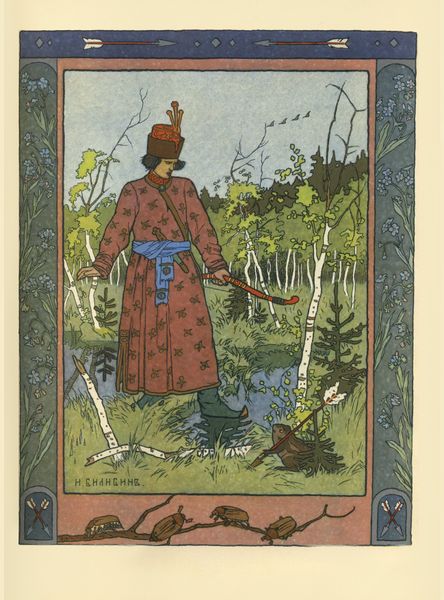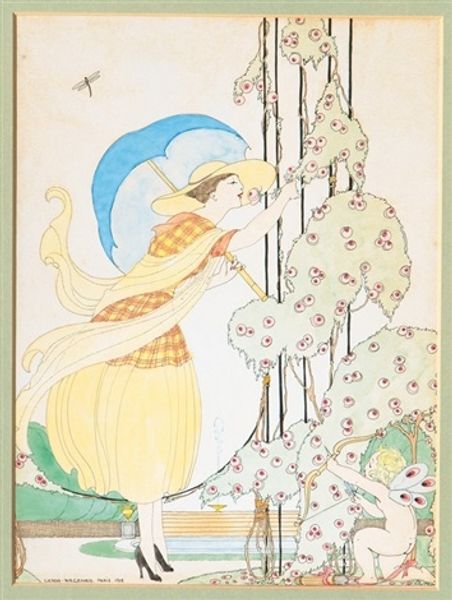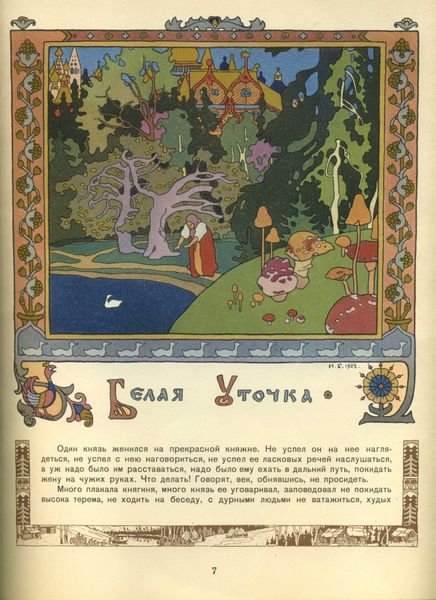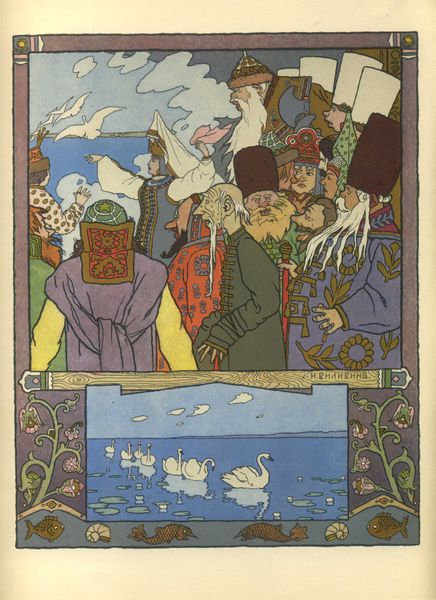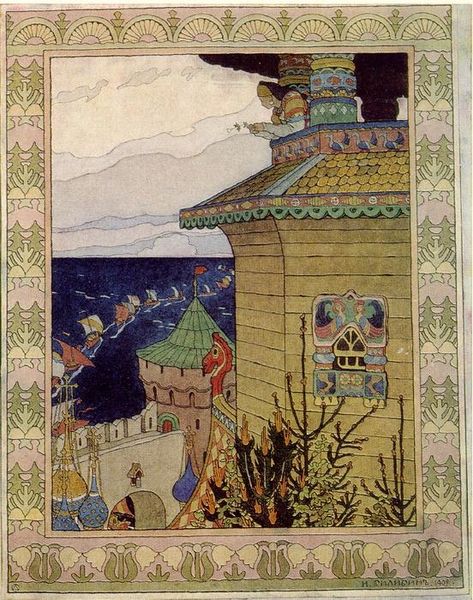
painting, watercolor
#
art-nouveau
#
painting
#
landscape
#
figuration
#
watercolor
#
watercolour illustration
#
watercolor
Copyright: Public domain
This illustration for the Russian fairy tale "White Duck" was made in 1907 by Ivan Bilibin. It depicts a poignant moment from the story where children stand at the edge of a lake, their reflections shimmering in the water, while their mother, transformed into a white duck, swims away. Bilibin's work is deeply rooted in Russian folklore and national identity. The stylized landscape and decorative border reflect the influence of traditional Russian folk art, known as "lubok," which served as a form of popular education and cultural expression for the masses. The fairy tale itself speaks to themes of family, loss, and transformation, common in Russian folklore. During the early 20th century, Russia experienced a surge of nationalism and interest in its cultural heritage. Artists like Bilibin played a crucial role in reviving and promoting these traditions. By studying folk art, archival materials, and ethnographic collections, we can better understand how Bilibin's illustrations contributed to shaping a national cultural identity. Art is always contingent on the social and institutional contexts in which it is made.
Comments
No comments
Be the first to comment and join the conversation on the ultimate creative platform.
